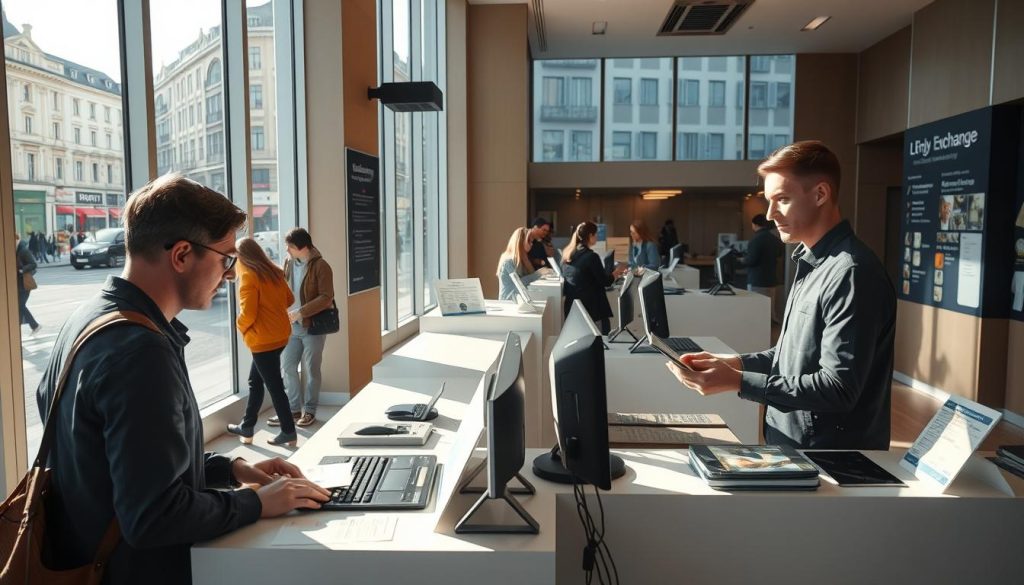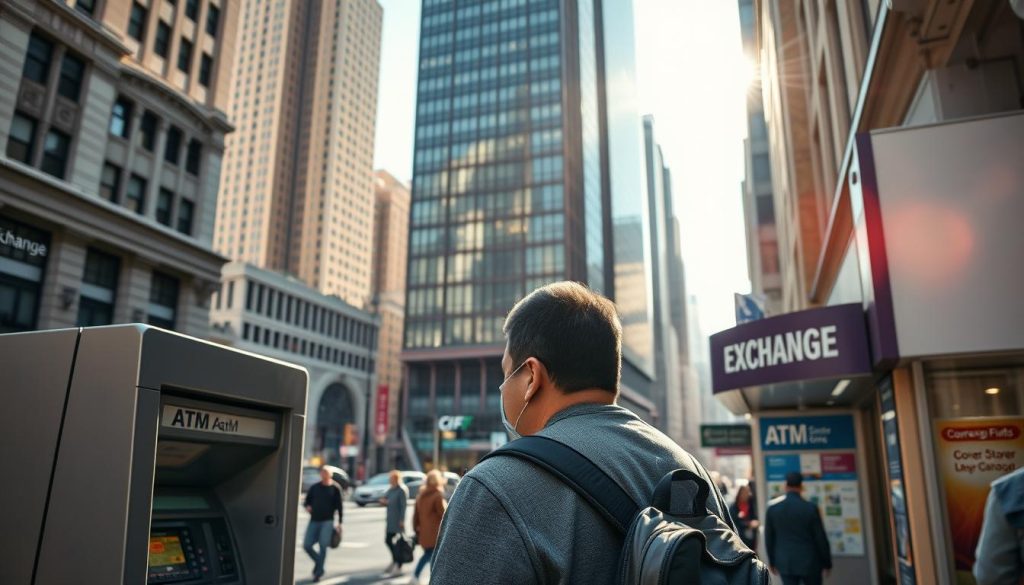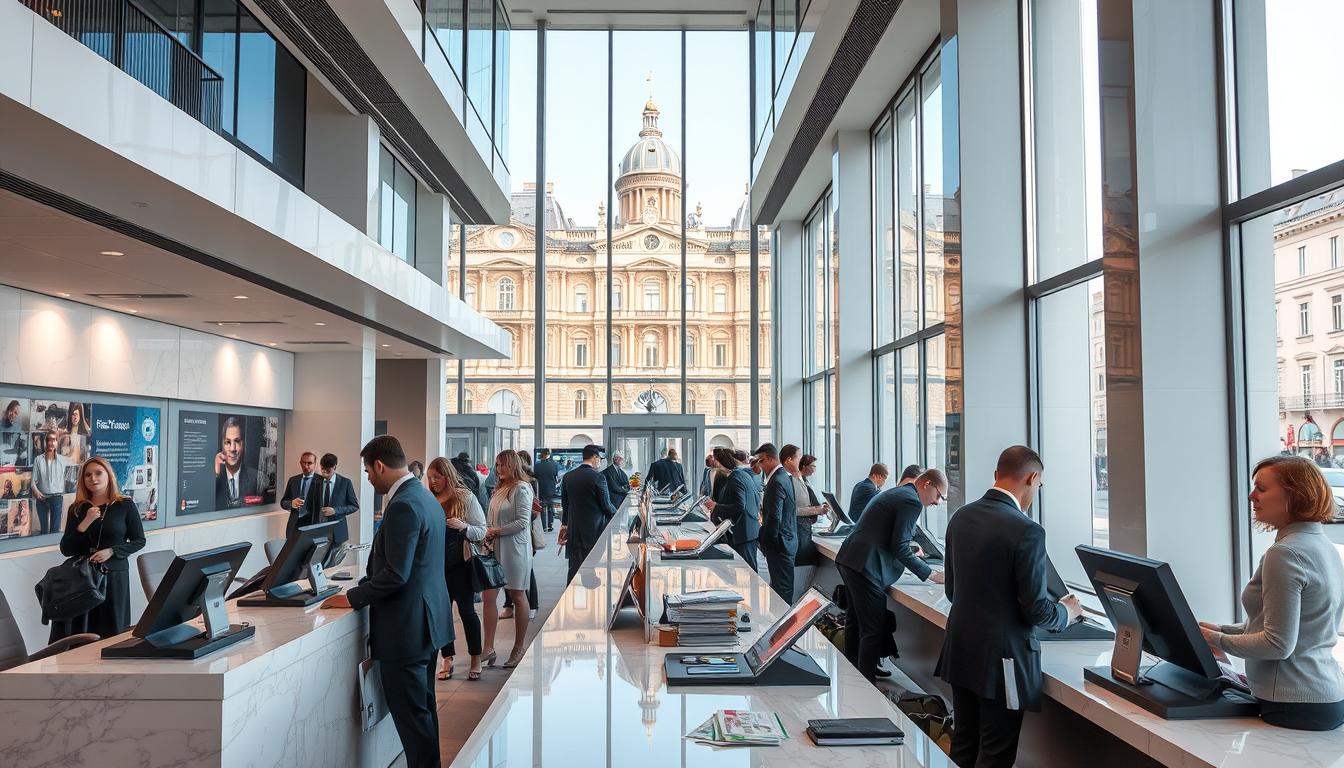Did you know that using the mid-market exchange rate can save you up to 10% on currency conversions? This is just one of the many tips you’ll discover in this guide to managing your money effectively during your trip. Whether you’re planning a short visit or an extended stay, understanding the local currency and payment options is essential.
In this country, the official currency is the Euro (EUR), making it easy for travelers from the Eurozone. For others, knowing how to get the best exchange rate can make a big difference. From cards to cash, we’ll explore the most convenient ways to handle your transactions without unnecessary fees.
This guide will walk you through everything you need to know, from choosing the right payment method to avoiding hidden costs. Let’s make your trip smooth and hassle-free!
Understanding Latvia’s Currency Landscape
Latvia’s shift to the Euro in 2014 marked a significant change for both locals and visitors. Before this, the Latvian lats was the official currency. The transition to the Euro streamlined payments and made it easier for travelers from the Eurozone to manage their money.
The Transition to the Euro in Latvia
In 2014, Latvia adopted the Euro as its official currency, replacing the Latvian lats. This move aligned the country with most of the European Union, simplifying transactions for tourists and businesses alike. The Euro’s widespread acceptance means you can use it almost anywhere, from hotels to local markets.
Understanding the mid-market exchange rate is crucial for travelers. This rate, also known as the interbank rate, is the midpoint between the buy and sell prices of currencies. It’s the fairest rate you can get, without hidden markups or extra fees.
What This Means for Travelers
For travelers, this change simplifies currency management. You no longer need to worry about exchanging multiple currencies when visiting neighboring countries. Using a card for most transactions can save you time and reduce the need to carry cash.
Here’s a quick comparison of the old and new systems:
| Aspect | Latvian Lats | Euro |
|---|---|---|
| Currency Code | LVL | EUR |
| Adoption Year | 1993 | 2014 |
| Exchange Rate (Approx.) | 1 LVL = 1.42 EUR | 1 EUR = 1 EUR |
By understanding these changes, you can make smarter spending decisions and avoid unnecessary costs. Whether you’re using cash or a card, knowing your exchange rate ensures you get the best value for your money.
Essential Tips for Currency Exchange in Latvia
Understanding currency exchange rates is key to managing your travel budget effectively. Whether you’re exchanging cash or using a card, knowing how rates work can save you money and avoid unnecessary fees.

Comparing Mid-Market Rates and Markups
The mid-market rate is the fairest exchange rate you can get. It’s the midpoint between the buy and sell prices of currencies. However, most exchange providers add a markup, which increases the cost for you.
To avoid overpaying, always compare the mid-market rate with the rate offered by providers. Use online tools like currency converters to check real-time rates. This ensures you’re getting the best deal.
Identifying Hidden Fees
Many exchange services include hidden fees in their rates. These can be service charges, transaction fees, or even extra costs for using a card. Always ask for a breakdown of all charges before committing to a transaction.
Here’s a quick checklist to help you spot hidden costs:
- Compare rates from multiple providers.
- Ask about additional fees upfront.
- Check if your bank or card issuer charges foreign transaction fees.
Using Online Tools for Better Rates
Online currency conversion tools can help you find the best exchange rate. Websites and apps like Wise or Revolut offer competitive rates and low fees. They’re a convenient option for travelers looking to save time and money.
Before your trip, make sure to verify the rates and fees offered by these services. This way, you can avoid surprises and keep your budget on track.
By following these tips, you can make smarter decisions about currency exchange and save money for your travels. Always double-check rates and fees to ensure you’re getting the best value for your money.
How to Get the Best Rates Before You Travel
Planning your trip includes more than just packing—it’s about managing your money wisely. One of the smartest moves you can make is exchanging your currency before you leave. This not only saves time but also ensures you get the best exchange rate possible.
Why Exchange Currency Before Your Trip?
Exchanging USD to EUR in advance offers several benefits. First, you avoid the high fees and poor rates often found at airports. Second, you’ll have cash ready for immediate use upon arrival, saving you the hassle of finding an ATM or exchange service.
Here’s why pre-trip currency conversion is a smart choice:
- Better exchange rates compared to airport kiosks.
- No last-minute stress or delays.
- More control over your money and budget.
Using Online Tools to Track Rates
Online tools like Wise or Revolut can help you monitor the mid-market rate. These platforms offer competitive rates and low fees, making them a convenient option for travelers. By tracking rates in advance, you can exchange your currency at the most favorable time.
Steps to Exchange USD to EUR in Advance
Here’s how to ensure you get the best deal:
- Compare rates from multiple providers, including banks and online services.
- Check for hidden fees or markups in the exchange rate.
- Use a reputable service to complete the transaction securely.
By following these steps, you’ll save money and avoid unnecessary stress during your trip. Always make sure to double-check rates and fees to get the best value for your currency conversion.
Latvia: Ultimate Travelers Guide to Currencies & Payments
Managing your finances while traveling can make or break your trip experience. This guide has covered everything you need to know about handling money in Latvia, from understanding the currency to choosing the best payment methods. Let’s recap the key points to ensure your travel is smooth and stress-free.

First, knowing the exchange rate is crucial. The mid-market rate is the fairest option, but many providers add a markup. Always compare rates and check for hidden fees to save money.
In Latvia, the Euro (EUR) is the official currency. It’s widely accepted, making it easy for tourists to use cards or cash. However, using a travel money card can be a smart option to avoid unnecessary fees.
Here’s a quick summary of the primary payment methods:
| Method | Benefits | Considerations |
|---|---|---|
| Credit/Debit Cards | Widely accepted, convenient | Check for foreign transaction fees |
| Cash | Useful for small purchases | Carry only what you need |
| Travel Money Cards | Low fees, secure | Preload with Euros for better rates |
Pre-planning your currency exchange can save you time and money. Avoid airport kiosks, as they often have poor rates. Instead, use reputable banks or online services for better deals.
Finally, being well-informed is the best way to avoid pitfalls. Whether you’re a first-time tourist or a seasoned traveller, understanding Latvia’s payment system ensures a hassle-free trip.
Cash vs. Card Payments in Latvia
Choosing between cash and card payments can significantly impact your travel experience. Both methods have their advantages, and knowing when to use each can save you time and money. Let’s explore the best scenarios for each option.
When to Use Cash for Tipping and Small Purchases
Cash is often the preferred payment method for small transactions. In restaurants, tipping in cash ensures your tip goes directly to the staff. Many small vendors, especially in local markets, may not accept cards, making cash essential.
Here are some common uses for cash:
- Tipping at restaurants, cafes, and hotels.
- Paying for small items at local markets or street vendors.
- Using public transportation, where card machines may not be available.
Comparing Fees and Convenience
While cash is handy for small purchases, cards offer convenience for larger transactions. Most ATMs in Latvia have a withdrawal limit of 250 euros, so plan accordingly. Be aware of potential fees for cash withdrawals or foreign transactions.
Here’s a quick comparison:
- Cash: No extra fees for direct purchases, but withdrawal fees may apply.
- Cards: Widely accepted, but check for foreign transaction fees or markups.
Security and Practical Tips
Carrying both cash and a reliable travel card is a smart option. Keep only the cash you need for the day and store the rest securely. For cards, notify your bank about your travel plans to avoid any issues with international use.
By balancing cash and card use, you can enjoy a hassle-free trip while managing your money effectively. Always double-check fees and plan ahead to make the most of your travel budget.
Navigating ATMs and Dynamic Currency Conversion
Navigating ATMs in a foreign country doesn’t have to be stressful if you know what to look for. One of the biggest challenges travelers face is avoiding unnecessary fees and unfavorable exchange rates. Understanding how to use ATMs wisely can save you both time and money.
Dynamic currency conversion (DCC) is a service offered by some ATMs and merchants. It allows you to see the transaction amount in your home currency. While this might seem convenient, it often comes with hidden markups and poor exchange rates. Always choose to be charged in the local currency, such as Euros, to avoid these extra costs.

- Select ATMs wisely: Look for ATMs affiliated with major banks, as they typically offer better rates and lower fees.
- Check for partnerships: Some card providers have partnerships with local banks, offering fee-free withdrawals.
- Compare rates: Use online tools to compare exchange rates before withdrawing money.
For example, withdrawing 200 euros from an independent ATM might cost you $258.43 due to a 12% markup. In contrast, using a bank ATM could reduce this cost to $225. Always read the prompts carefully to avoid unexpected fees.
Here’s a quick comparison of ATM options:
| ATM Type | Fees | Exchange Rate |
|---|---|---|
| Independent ATM | 3.95 euros | $1 = 0.7891 euros |
| Bank ATM | No fee | $1 = 0.896 euros |
By following these tips, you can make smarter decisions about using ATMs and avoid unnecessary expenses. Always double-check the exchange rate and select the local currency to get the best value for your money.
Using International Travel Cards in Latvia
Traveling abroad? An international travel card could be your best financial companion. These cards are designed to simplify your spending, save you from unnecessary fees, and offer competitive exchange rates. Whether you’re exploring cities or dining at local restaurants, a travel card ensures you’re always prepared.
Why Choose a Multi-Currency Travel Card?
One of the biggest advantages of travel cards is their ability to hold multiple currencies on a single card. This feature allows you to switch between EUR and other currencies without additional conversion fees. It’s a convenient option for frequent travelers who visit multiple countries.
Wise Multi-Currency Card Benefits
The Wise Multi-Currency Card stands out for its low fees and transparent mid-market exchange rate. With support for 40+ currencies, it’s a versatile option for managing your money abroad. Users praise its ease of use and the ability to track transactions in real-time.
Other Recommended Travel Card Options
If Wise isn’t your preferred choice, consider alternatives like Revolut or Travelex. Revolut offers access to 30+ currencies and three account plans, making it a flexible option. Travelex, with its Trustpilot score of 4.3/5, is another reliable choice for travelers. Both cards provide competitive rates and low fees.
Here’s a quick comparison of popular travel cards:
| Card | Supported Currencies | Key Features |
|---|---|---|
| Wise | 40+ | Mid-market rate, low fees |
| Revolut | 30+ | Multiple account plans |
| Travelex | 10 | High Trustpilot rating |
Using a travel card simplifies financial management while abroad. It eliminates the need to carry large amounts of cash and reduces the risk of overspending. Always double-check the fees and features to find the best option for your trip.
A Comprehensive Look at Latvia’s Payment Methods
When traveling, knowing your payment options can make all the difference. In this country, you’ll find a mix of traditional and modern methods to handle your money. Whether you prefer cash, cards, or digital solutions, understanding the best way to pay ensures a smooth experience.
Cash is still widely used, especially in smaller towns or local markets. It’s a reliable option for small purchases or tipping. However, carrying large amounts isn’t always safe. Many tourists find it helpful to keep some cash for emergencies but rely on cards for most transactions.

Cards, like Visa and Mastercard, are accepted in most places, from hotels to restaurants. They’re convenient and reduce the need to carry cash. However, always check for foreign transaction fees before using your card. Some banks offer travel-friendly accounts with low or no fees.
For those who prefer a hybrid approach, travel money cards are a great option. These cards allow you to load multiple currencies, including EUR, and often come with competitive exchange rates. They’re secure and can be a lifesaver if your primary card is lost or stolen.
Here’s a quick comparison of the primary payment methods:
| Method | Advantages | Limitations |
|---|---|---|
| Cash | Accepted everywhere, no fees | Risk of loss or theft |
| Credit/Debit Cards | Convenient, widely accepted | Potential foreign transaction fees |
| Travel Money Cards | Secure, multi-currency support | May have initial setup fees |
Emerging digital payment options are also gaining popularity. Mobile apps and contactless payments are becoming more common, especially in larger cities. These methods are fast, secure, and often come with added benefits like rewards or discounts.
Having multiple payment options is always a smart way to stay prepared. Whether you’re exploring the world or enjoying a quiet time in a local café, knowing your payment choices ensures you’re never caught off guard.
Money Management Tips for the Savvy Traveler
Smart money management can transform your travel experience. By setting a realistic budget and tracking your spending, you can enjoy your trip without financial stress. Here’s how to make the most of your money while exploring the world.
Budgeting for Daily Expenses
Start by dividing your expenses into categories: accommodation, food, and transportation. For example, a daily budget of 50-70 EUR can cover basic needs in many cities. Use travel apps like Wise or Revolut to monitor your spending in real-time.
Here’s a breakdown of average daily costs:
- Accommodation: 20-40 EUR for a mid-range hotel or hostel.
- Food: 10-15 EUR for meals at local restaurants.
- Transportation: 5-10 EUR for public transit or rideshares.
Leveraging Technology for Secure Transactions
Travel apps are a game-changer for managing your money. Apps like Wise offer multi-currency accounts and competitive exchange rates. They also allow you to track transactions and avoid hidden fees.
Keep a record of your expenses to avoid overspending. Apps like Yelp can help you find affordable dining options, while Google Flights can alert you to price drops for future trips.
Balancing Cash and Digital Payments
While cards are convenient, having some cash on hand is essential for small purchases or tipping. Use a travel money card to access multiple currencies without extra fees.
Always choose the local currency when prompted at ATMs or merchants. This ensures you get the mid-market rate and avoid unnecessary markups.
By following these tips, you can enjoy a stress-free trip while keeping your money safe and well-managed. Plan ahead, track your spending, and make smart choices to maximize your travel experience.
Travel Safety and Currency Handling in Latvia
Staying safe while handling money abroad is crucial for a stress-free trip. Whether you’re using cash or a card, taking precautions can protect your money and ensure a smooth experience. Here are some essential tips to keep in mind.
First, always keep your cash and cards secure. Use a money belt or a hidden pouch to store your valuables. Avoid carrying large amounts of cash and only take what you need for the day. This minimizes the risk of theft.
When using ATMs, choose machines located in well-lit, secure areas like banks or shopping centers. Be cautious of skimming devices and always cover the keypad when entering your PIN. If possible, use ATMs affiliated with major banks to avoid unnecessary fees.
Dynamic currency conversion (DCC) is a common scam targeting tourists. Always choose to be charged in the local currency (EUR) to avoid poor exchange rates and hidden markups. This ensures you get the best value for your money.
Here are some additional safety tips:
- Notify your bank about your travel plans to avoid issues with international transactions.
- Use a travel money card for added security and lower fees.
- Keep a record of your account details and emergency contact numbers in a safe place.
Finally, stay informed about local security practices. Be aware of your surroundings, especially in crowded areas like markets or airports. By following these tips, you can enjoy your trip without worrying about your money.
Exploring the Costs: Daily Expenses in Latvia
Exploring the costs of your trip can help you plan better and avoid overspending. Whether you’re a budget-conscious tourist or prefer a more luxurious experience, understanding daily expenses is essential. From accommodation to meals and transportation, here’s a breakdown of what to expect.
Accommodation Costs
Your choice of lodging can significantly impact your travel budget. Budget hotels average around £18 (EUR 21) per night, offering basic amenities. Mid-range options cost approximately £43 (EUR 52), providing more comfort and services. For luxury stays, expect to pay around £98 (EUR 118) per night.
Daily Food Expenses
Food is another major expense. Budget meals, like street food or local restaurants, cost about £12 (EUR 14) per day. Mid-range dining averages £29 (EUR 34), while luxury meals can reach £70 (EUR 83). A bottle of beer costs around £2 (EUR 2), and a coffee is typically £3 (EUR 3).
Transportation Costs
Getting around is affordable with public transport. A daily pass costs around £5 (EUR 6), while taxis are pricier but convenient for short trips. Renting a car is another option, but fuel and parking fees add to the total cost.
Comparing Spending Levels
Here’s a quick comparison of daily expenses for different budgets:
| Category | Budget | Mid-Range | Luxury |
|---|---|---|---|
| Accommodation | £18 (EUR 21) | £43 (EUR 52) | £98 (EUR 118) |
| Food | £12 (EUR 14) | £29 (EUR 34) | £70 (EUR 83) |
| Transport | £5 (EUR 6) | £10 (EUR 12) | £20 (EUR 24) |
Practical Tips for Saving Money
To control expenses, consider these tips:
- Book accommodation in advance for better deals.
- Eat at local restaurants instead of tourist hotspots.
- Use public transport or walk to save on transportation costs.
Exchange rates also play a role in your spending. Always check the mid-market rate to ensure you’re getting the best value for your money. By planning ahead and making smart choices, you can enjoy your trip without breaking the bank.
Insider Tips for a Hassle-Free Payment Experience
Making the most of your travel budget starts with avoiding common payment pitfalls. Whether you’re exchanging currency or using a card, knowing the best practices can save you time and money. Here’s how to ensure a smooth trip without unnecessary stress.
Why Airport Exchange Kiosks Are a Bad Idea
Airport exchange kiosks are convenient but often come with unfavorable exchange rates and hidden fees. These providers add a significant markup, making it one of the most expensive ways to convert your money. For example, exchanging $100 at an airport might cost you $10 more than using a local bank or online service.
Here are some common pitfalls to avoid:
- High markups on exchange rates.
- Additional service fees or extra fees.
- Limited currency options compared to other providers.
Using Technology for Secure Transactions
Travel apps and digital wallets are game-changers for managing your money abroad. Platforms like Wise and Revolut offer real-time exchange rate monitoring and low fees. These tools allow you to track your spending and avoid surprises.
Here’s how to leverage technology:
- Set up alerts for currency conversion rates.
- Use a travel money card to hold multiple currencies.
- Enable notifications for every transaction to stay informed.
By using these tools, you can make smarter financial decisions and keep your trip on budget.
Comparing Exchange Options
Not all exchange providers are created equal. Here’s a quick comparison to help you choose the best option:
| Provider | Exchange Rate | Fees |
|---|---|---|
| Airport Kiosk | High markup | Additional service fees |
| Local Bank | Mid-market rate | Low or no fees |
| Online Service (e.g., Wise) | Mid-market rate | Low fees |
Always make sure to compare rates and check for hidden costs before making a transaction. This simple step can save you a significant amount of money during your trip.
Conclusion
Exploring new places is exciting, but managing your money wisely ensures a smooth journey. Understanding the local currency and payment systems is key to avoiding unnecessary stress. By monitoring the mid-market rate and avoiding high fees, you can make the most of your budget.
Using a travel card is a smart way to handle transactions abroad. It offers convenience, security, and often better exchange rates compared to cash. Always plan ahead to avoid extra charges and ensure a hassle-free experience.
With these tips, you’re ready to navigate the world confidently. Whether you’re exchanging euros or using digital tools, careful planning makes all the difference. Enjoy your trip with peace of mind, knowing your finances are in good hands.
The above is subject to change.
Check back often to TRAVEL.COM for the latest travel tips and deals.
Here are some Tours & Sightseeing suggestions that might pique your interests!





